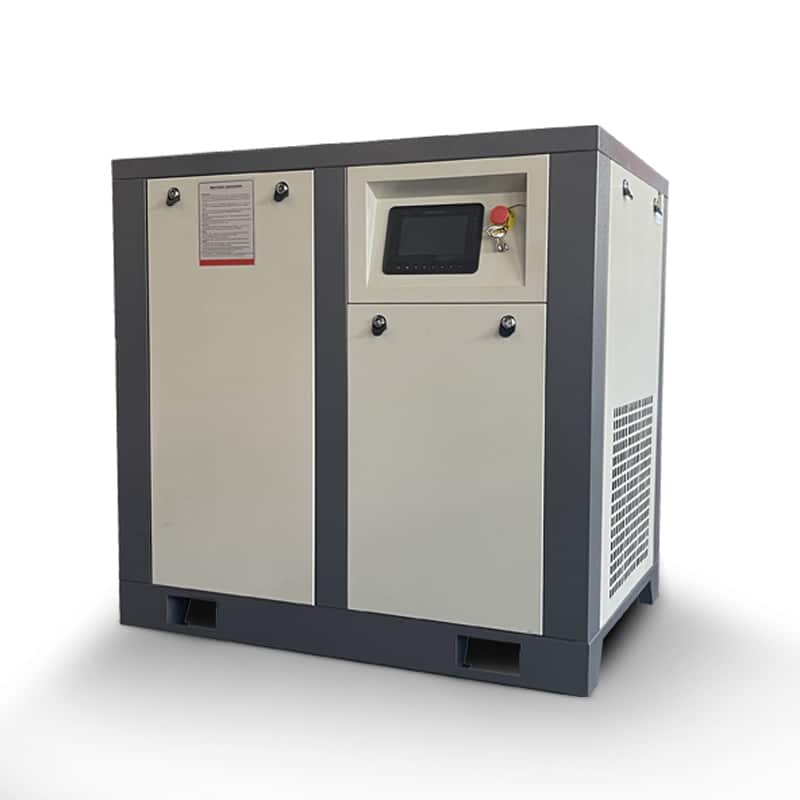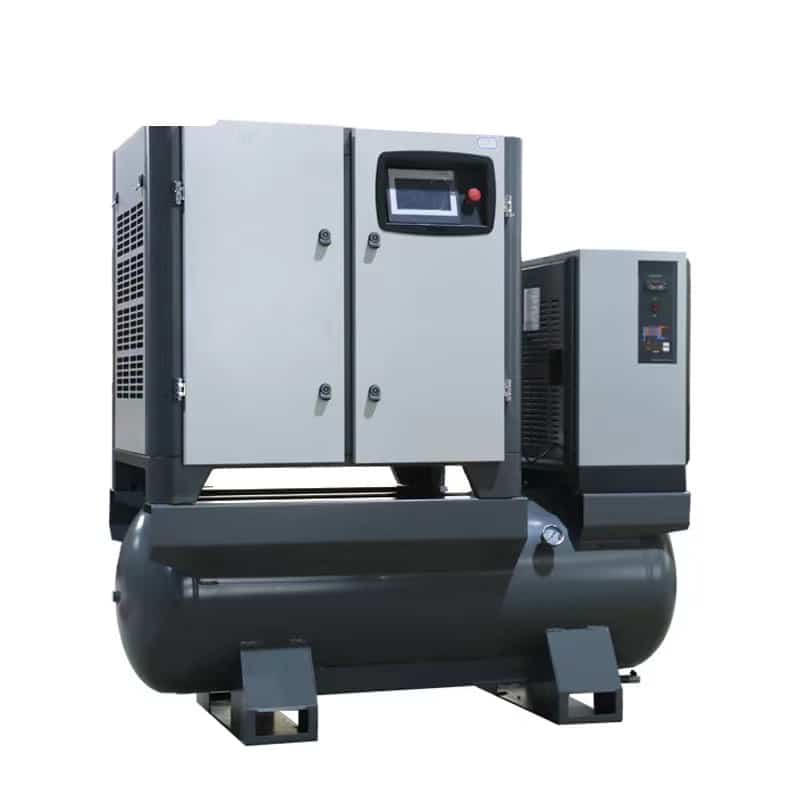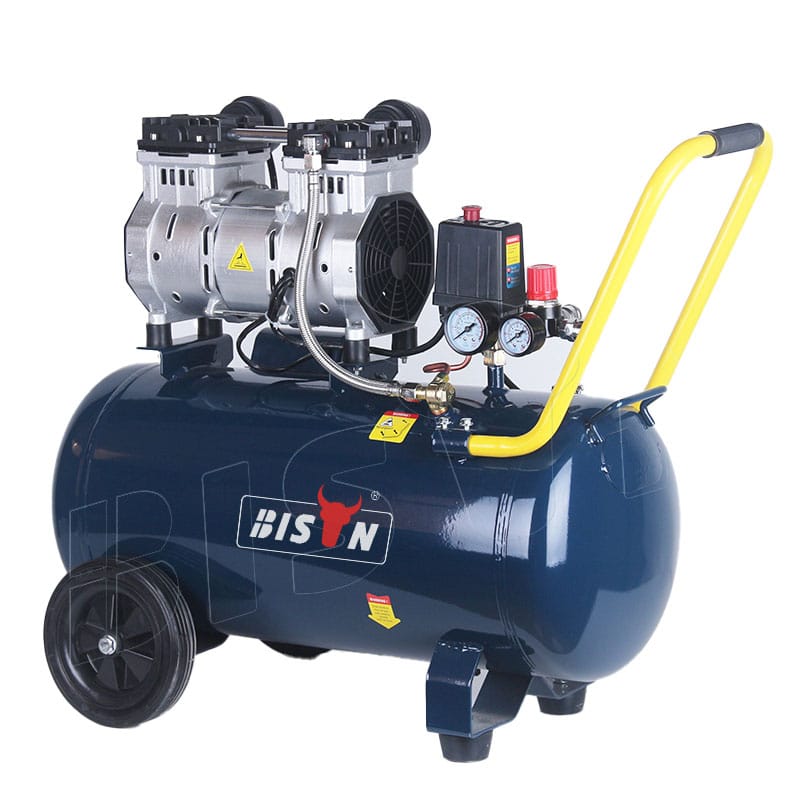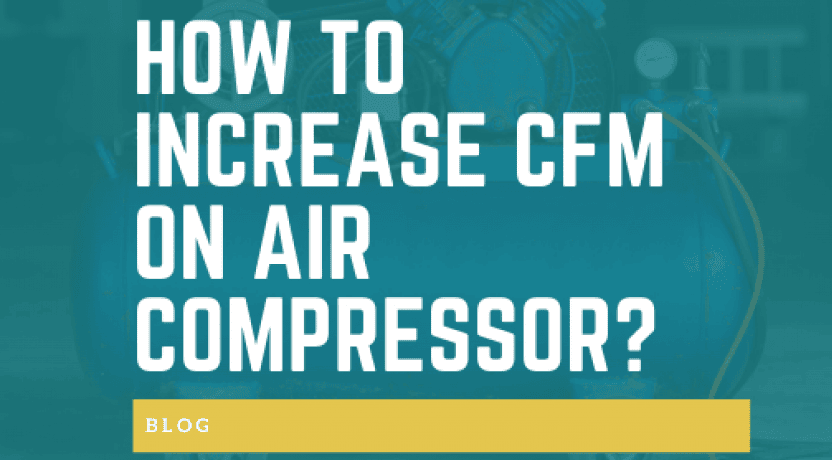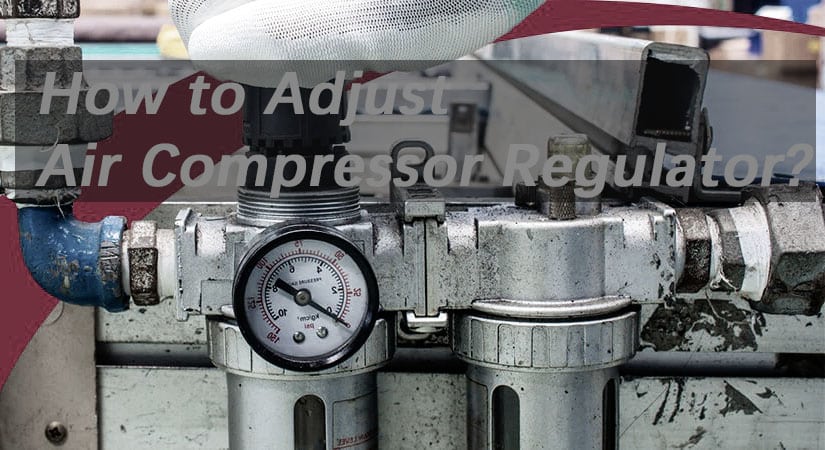air compressor blog
How to connect air hose to air compressor
- Dec 31, 2023
BISON will share a step-by-step guide on how to connect an air hose to an air compressor in this article. We’ll also talk about how to connect several hoses into an air compressor.
There are many types of air hoses, such a wide variety in various price ranges. People need to figure out what the difference is and which hose they need for their air compressor. This article will help you figure it out as well.
What is an air hose?
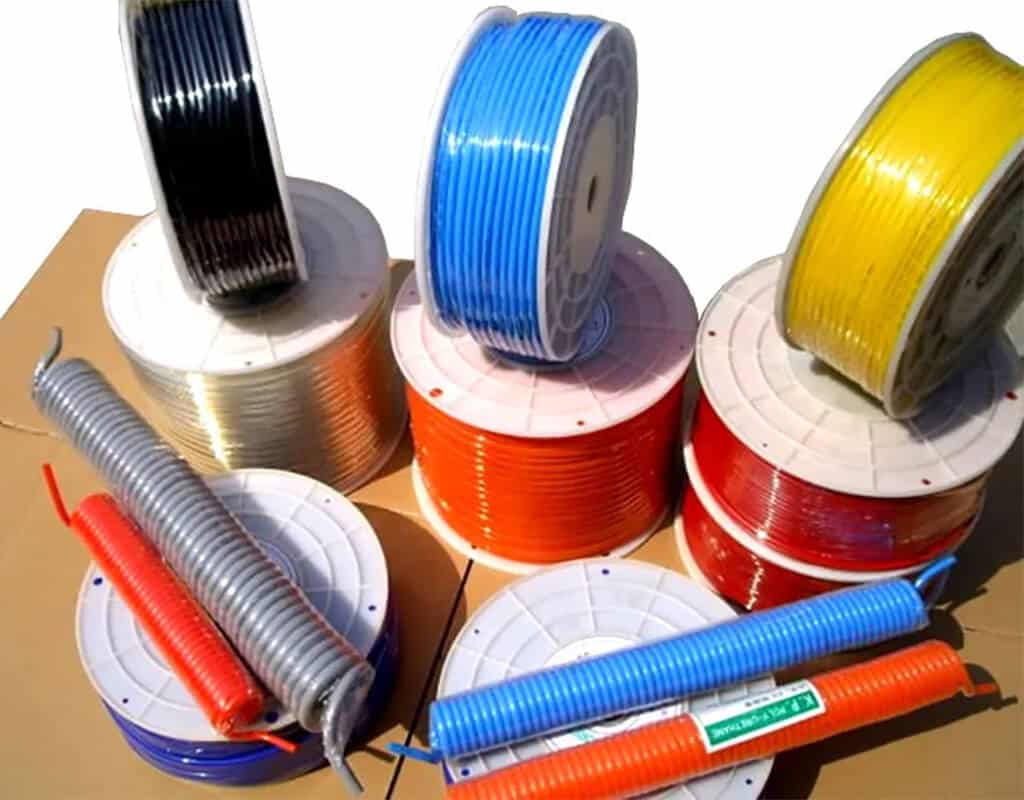
Air compressor hoses are industrial power hoses used to transport pressurized air or other gasses from a compressor to another location, most commonly the operating end of an appliance.
Air hoses must be both solid and flexible to be effective. They must provide constant pressure or strength and withstand high pressures without tearing or breaking their seals. They should also offer flexibility so that other components within the tool or the device operator can work without restriction. This flexibility allows hoses to be installed quickly around work areas with relative ease – brackets or corner connectors are usually unnecessary.
Also known as pneumatic tubing, air hoses are primarily used in the manufacturing and engineering fields, including:
- Aeronautical engineering
- Mechanical engineering
- Chemical production
- Food manufacturing
Types of air hoses
Air hoses are available in various sizes and strengths, each suitable for different uses, pressures, and operating temperatures. When choosing air hosing, it’s essential to identify the right type for your project for safety reasons. This will lessen the possibility of deterioration and accidents and help ensure proper lifespan for the hose itself.
Let’s take a look at some of the basic types of air hoses available:
- Standard air hose
A standard air hose is a straight tube with no coils or bends. This makes them an excellent choice for easy storage when laying out and looping on flat surfaces. They are usually mounted on rails operated with a crank handle that can be attached to walls and ceilings for storage.
Standard air hoses are a good choice for hand tools like paint guns because they don’t resist pulling, giving users freedom of movement.
- Retractable air hose
Retractable or coiled air hose is distinguished by tensile coils along its length, giving it the appearance of a traditional telephone wire. The rings are resilient; therefore, the hose reel will revert to its initial dimensions and form once released. This allows for easy storage and ensures the hose will not present a tripping hazard in busy areas such as factory floors.
- High-pressure air hose
These hoses are designed to handle maximum air pressure – around 20 bar and above. 50-bar hoses are a popular choice. Usually, they are made of solid rubber.
- Heat-resistant air hose
High-temperature ratings for air hoses range from a relatively modest 40℃ to an exceptionally resistant 260℃, two and a half times the boiling point of water. Air hoses with maximum temperature are ideal for harsh industrial environments.
How to connect a hose to an air compressor?
When you run your air compressor to fill the tank with compressed air, the discharge coupler will prevent the air from escaping.
Otherwise, all the compressed air will escape from the tank. This compressed air flows through the air regulator to the end of the airline line, where the coupler is installed.
This coupler keeps the air in the tank until you need to use it. The coupler supplied with your air compressor may vary in color or size, but more or less, it will look the same in shape.
We get a lot of people who call and email us asking questions like: “What is the best air hose for a compressor.”
Always keep your air compressor in mind when purchasing an air compressor hose, as not all hoses work well on every compressor. But generally speaking, always go for hybrid polymer air hoses.
From a flexibility standpoint, these are the most flexible air hoses on the market.
They have the flexibility of a limp noodle, are very easy to use, and are durable.
Hybrid polymer air hoses will be handy if you use a nail gun or paint sprayer.
They stay flexible in all weather applications, so they will remain flexible whether it’s minus 32 degrees or hotter than 100 degrees.
Before you begin, ensure you have all the necessary air compressor hose fittings.
Step-by-step guide
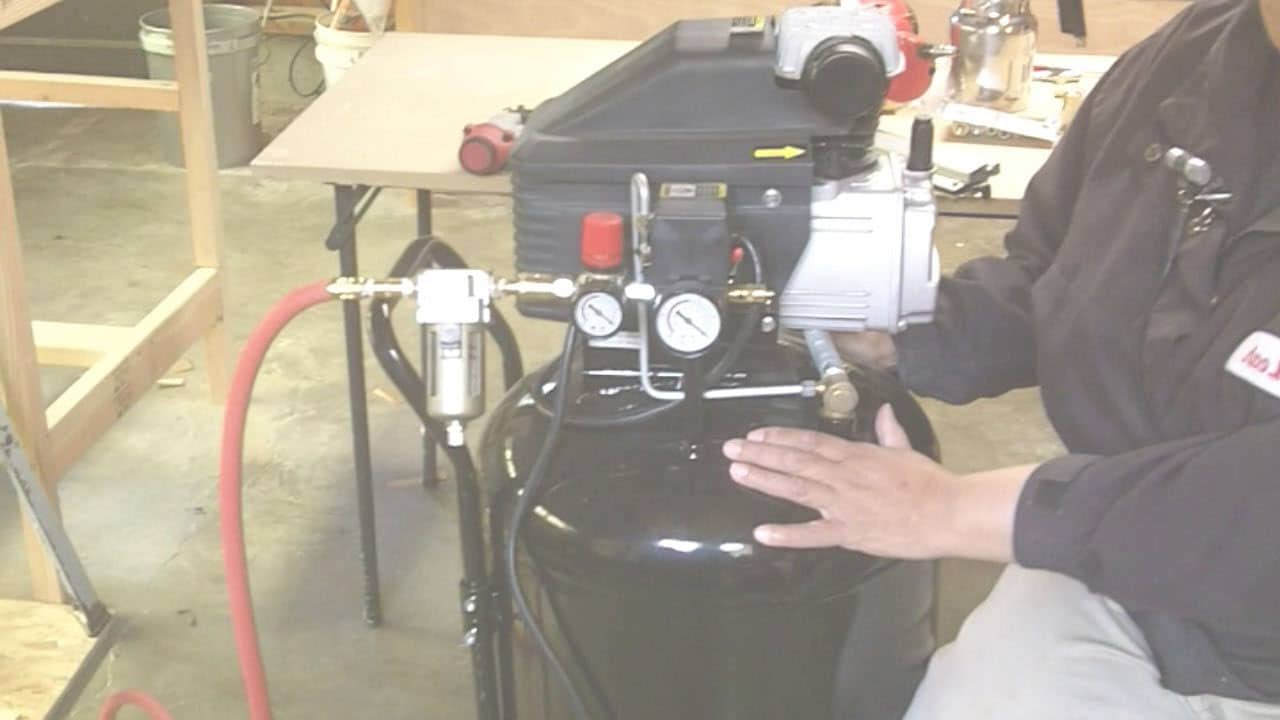
Below, we will share a complete step-by-step guide on how to connect a hose to an air compressor.
Attach the air chuck to the hose
First, connect the air chuck to the hose. It can be attached with a quick disconnect coupler or fitting.
If you only use your air compressor hose to inflate tires, we recommend permanently attaching an air chuck to one end.
Check the hose ends
Let’s say you will use your air compressor hose only to inflate tires and have an air chuck attached to one end of the hose. The other end of the air hose can be connected to the air compressor tank with threaded fittings.
Teflon tape wrap
Now, wrap some Teflon tape around the threaded end of the hose. Wrap at least 3-4 wraps of teflon tape around the hose on the threaded portion.
Thread the air chuck
Now, pick up the air chuck and fit it to the end of the hose, where we previously applied the Teflon tape. Tighten the air chuck or connector with two wrenches.
The first wrench will hold the air hose, while the second wrench will tighten the air chuck fitting. Be sure to over-tighten the hose so it fits tight enough. Otherwise, it will lose its grip.
Thread the other side of the hose
Since you now have an air chuck or connector on one end of the hose and a coupler on the other, you can connect any air tool directly to your air compressor.
Now, pick the other end of the hose and thread it with Teflon tape. Now, this end is ready to be attached to the air compressor.
Tighten this end of the hose in the same way with two wrenches.
This time, hold the discharge coupler attached to the air compressor tank with one wrench and tighten the hose with the other.
How to connect a hose to an air compressor – (The easy way to do it)
In this case, we assume both ends of the hose already have fittings, and you want to know how to plug and unplug the hose from the air compressor.
Simple, here’s how we’ll do it. All you have to do is insert the hose pin, which immediately locks and will be attached to the air compressor.
When you want to unplug the hose, press the discharge coupler ring on the compressor end and pull the hose connector pin from the compressor discharge coupler.
Now, drop the compressor ring back into its position.
As discussed earlier, installing hose fittings can add another air hose.
Connect one end of the air hose to the air compressor tank, and on the other end of the hose, connect the other hose to it with the help of a connector. This will connect the two hoses and double the length of your hose.
Female and male connecting valve
If you have a female coupler check valve on the hose, this can cause problems. This prevents air from escaping when the contact is disconnected.
That’s why we always recommend installing a male coupler check valve on the hose for your pneumatic tools and accessories like air chucks, air drills, impact guns, etc.
How to connect multiple hoses to an air compressor?
Now, let’s talk about connecting multiple hoses to the same air compressor and using numerous air tools with the same compressor.
Air compressors operate compressed air-powered power tools such as impact wrenches, nail guns, car or house painting, etc. These air-powered tools make our commercial and domestic work easier and faster.
Commercial users typically have multiple air tools with an air compressor.
If you are one of them and are tired of repeatedly changing the hoses of different tools, we suggest you keep more than one air hose together.
And it can be done very quickly by replacing just one piece of hardware in your air compressor.
Steps for connecting multiple hoses to an air compressor:
We’ll provide an in-depth tutorial on how to connect different hoses to the same air compressor.
Open the drain valve
First, turn off your compressor and let it cool down for a few minutes. Now open the air compressor drain valve.
This is usually a ¼-inch round brass fitting. You’ll find it under the belly of your air compressor tank.
Open this water release valve by turning it counterclockwise. You can twist the valve with a pair of pliers. You will hear a sudden release of the pressurized air stored in the tank.
Wait until all the condensation and pressurized air escapes. Once you know all the air is out, turn the water release valve clockwise to close it firmly.
Remove the old connector
Use an open-end wrench to turn the nut located on the back of the air hose coupler.
Turn it counterclockwise to loosen it. Now, remove the existing connector from your air compressor.
Arrange two or three-way distribution connectors
It’s the only piece of hardware you need to replace. Purchase a two-way or three-way split quick connector, depending on your needs.
Use teflon tape
Wrap the threads of the teflon tape to this new two-way or three-way split quick connector.
Replace the connector
Since you have already removed the connector from your air compressor, install your new two-way or three-way connector and start tightening it clockwise. When fixed, use a wrench to narrow it further.
Reconnect the compressor
Reconnect your compressor to power and turn it on. It will take some time to build up pressure until the air compressor starts.
Check out the related items
Once your air compressor is fully operational, use a water spray bottle filled with water and a few drops of liquid soap.
Spray some of this water + soap solution on the new connector fittings.
Now, look for the bubbles on the new matching objects. If you see any bubbles, tighten the connector with a wrench.
Repeat this until you see no more bubbles.
The above is BISON’s guide on how to establish the connection between the hose and the air compressor, and how to connect multiple hoses to the same compressor. BISON, a professional air compressor manufacturer and air compressor accessories supplier from China. Now you can connect multiple hoses and use multiple air tools in one air compressor. Apply a few drops of machine/tool oil to the new multi-way connector to ensure smooth installation and release of multiple hoses. If you want to know more information about air compressors, please contact BISON for more information.
frequently asked questions about How to connect air hose to air compressor
Why is it essential to properly connect the air compressor to the hose reel?
It is essential to ensure that the hose reel and air compressor are connected correctly to prevent kinks, which can lower airflow and cause the compressor to overwork. Also, hose kinks can cause equipment damage and leaks.
The best way to prevent kinks is to use a swivel connector on the hose's compressor end. By doing this, the hose will remain aligned as it rotates. If a swivel connector is unavailable, keep the hose straight and avoid sharp bends.
Are all air hose fittings the same?
No, not every air hose fitting is the same. Air hose fittings come in a wide variety of sizes and types, each intended for a particular use. Certain air hose fittings are intended to be used with pneumatic tools, but others are for connecting two hoses. When choosing an air hose fitting, the most important thing to know is its connection (i.e., threaded, barbs, or quick disconnect). Once you know what type of connection you need, finding the right size and fitting style should be easy.
Are quick-connect fittings universal?
Quick-connect fittings are standard. There are many types and sizes of quick-connect fittings, and every kind is intended to function with a particular kind of tubing. When utilizing a quick connect fitting with the incorrect tubing type, the connection will likely leak. Before using a quick-connect fitting, consult the manufacturer's instructions to determine what type of tubing is compatible with the fitting.
What do the air hoses connect to?
Air hose connectors and accessories. Connectors are an essential component of pressurized gas and air tools, ensuring reliable pressure flow from the compressor. They connect hoses to compressors or tools and connect hose lengths or split hoses in different directions.
What types of tubes are used in air compressors?
Copper is an excellent choice for use with copper piping air compressors. Any condensation that develops in the system will not corrode the copper air compressor lines, so there is little risk of debris entering the system. It also tolerates heat well.
What size air hose do you need for the compressor?
Most hose sizes for air compressors are 1/4" to 1" in diameter. You should be able to determine which hose diameter is appropriate by looking at your air compressor.
If you have any enquiries about the BISON air compressor, we would love to hear from you.

